A formal committee table surrounded by chairs is seen towards the back of the stage. Lounge chairs and a coffee table dominate the downstage area. It is in this area that most of the action takes place. Large, framed head shots of former club champions adorn the walls. A door on the left leads to the general and recreational areas of the club building, while to the right a door leads to a private bar used by committee members.
In David Williamson’s 1977 play The Club, the action takes place in a single room, through which traipse combinations of club president, committeeman, general manager, coach, captain and star recruit, conniving and conspiring. Big money and commercial pragmatism threaten to uproot personal loyalties and ancient ways. “I want to turn all those photographs around so they don’t have to look down on this shameful scene,” says one character, who, it turns out, protests too much.
It is a famous view – Lou Richards thought that Williamson must have “pinched half his lines” from “a fly on a committee room wall”. It’s also a rare one. In the main, sport in Australia has just seemed to happen, with fans cheerfully oblivious to the goings-on in such inner sanctums. What matters has always happened on the pitch, at the lineout, in the penalty box, or on the half-forward flank. Governance has registered as a series of distant thuds from somewhere beyond the boundary edge.
Belatedly, perhaps, that is changing. The modern fan is ever more attuned to who is in charge, how they are faring, and to the idea of competition not only within but between sports: Melbourne and Sydney contain more professional sporting clubs than any two comparable cities in the world. Doping tests failed, games allegedly fixed, Indigenous players hounded, salary caps rorted, gaming monies courted: the environment, of course, has never been more issue rich.
But often the stories lay bare the administrative apparatus itself: five CEOs at the National Rugby League in four years; three CEOs at the Australian Rugby Union in six months; the resignation of half the directors of Tennis Australia; the ousting of the president of Swimming Australia; the near collapse of Cycling Australia; an overhaul of Athletics Australia after a failed merger; the turnover of private owners in the A-League and its strained relations with ardent fans; a pullback of Netball Australia from trans-Tasman competition in its touting for the television dollar; Steve Noyce sacked as CEO of two NRL clubs, the Roosters and the Sharks; Michael Jones sacked as CEO of the Brumbies after raising concerns about a financial deal, successfully suing for wrongful dismissal then lucratively settling; with the approach of the Olympics, open wranglings between the Australian Sports Commission and the Australian Olympic Committee about the future of the Australian Institute of Sport; and, perhaps above all, the intractable woes of Essendon Football Club, which have devoured 34 players, two wealthy presidents, two admired coaches, a well thought of CEO and a respected club doctor. That is before one even gets to Australian membership of scandal-wracked Fédération Internationale de Football Association, International Association of Athletics Federations, the International Cricket Council, the International Olympic Committee and Union Cycliste Internationale.
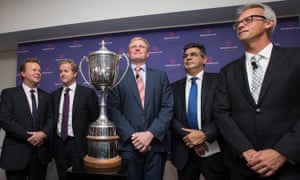
There’s a degree of distortion to this – one tends to hear about sports governance only in the context of its failures. It obscures more general trends of increasing levels of sophistication and professionalism in Australian sports administration. In olden times, the sports administrator was a dowdy figure – conservative, sometimes reactionary, usually elderly, proverbially a bit of an old duffer. “What’s the difference between an Australian cricket administrator and a shopping trolley?” went an old gag. “You can fit more food and grog in a cricket administrator and he’s easier to push around.” The annual reports of sporting organisations and clubs today are colourful, glossy, festooned with complicated bureaucratic matrices connected by arrows and dotted lines, and detail boards filled with some of Australian business’s most prestigious names. In The Club, the role of the tough-minded professional manager Gerry represented the intrusion of new values on former customs. Today he seems more like a stock character. It’s more than the 20 years since the ARU recruited former State Bank of NSW chief John O’Neill to revive its fortunes. Since then shrewd hardheads have been integral to navigating environments of growing commercial complexity. When soccer was out on its feet in 2003, the prime minister John Howard headhunted not a former athlete, or a politician, but a businessman, Westfield’s Frank Lowy, who hand-picked the board at his reconstituted Football Federation of Australia, and was invested with almost unilateral powers – to the extent that he bequeathed the chairmanship to his son Steven as if it were a family heirloom.
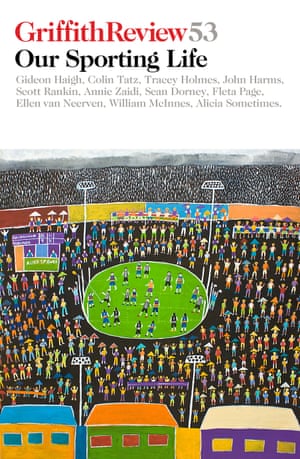
The boardrooms of big sport now enjoy the services of a corporate corps d’elite. Former Rio Tinto executive David Peever chairs Cricket Australia, NAB boss Cameron Clyne chairs the ARU, and ad mogul Harold Mitchell is deputy chair at Tennis Australia; CSR chairman Jeremy Sutcliffe sits on the NRL commission, Wesfarmers managing director Richard Goyder and Seek founder Paul Bassat on the AFL commission; former Alcoa Australia managing director Alan Cransberg chairs the West Coast Eagles. A promi-nent businessman is no panacea. After five years of chairmanship by Andrew Forrest between 1999 and 2004, Athletics Australia was in a deep financial hole; it will hope for better luck under the ubiquitous Mark Arbib, former sports minister turned Packer pointman. But it’s an increasingly gilded circle, lent further lustre by the occasional media personality: Eddie McGuire (president, Collingwood FC), David Koch (president, Port Adelaide FC), Ray Martin (director, Rabbitohs), Kerri-Anne Kennerley (director, Golf Australia), Sandra Sully (director, Hockey Australia) et al.
Yet here’s a strange thing. Despite the increasingly onerous responsibilities involved, the foregoing and their peers donate their services – the convention on not-for-profit boards, but also, one fancies, a tribute to sport’s amateur roots and place in the culture. In most sports, of course, there remains at everyday level a strong reliance on free labour. What we’re presented with in Australian sports governance, then, is a curious mix of shiny corporatism and altruistic volunteerism, cosy privilege and noblesse oblige.
‘The feedback is instant and constant’
To help me understand how things have moved on since The Club, I solicited the views of more than a score of Australians at senior level across a dozen sports about their experience of governance and management at their clubs, leagues, associations and organisations. A few of them I already knew; to others I was commended. There were commissioners, directors, club presidents, chief executives, senior managers; there were high corporate fliers; there were successful former athletes; there were men and women across all ages, from early 30s to late 60s. I asked quite straightforward questions – basically how did their sport run, how did they define their roles, what issues were they facing, and how did they think they were doing? In return I offered the freedom of anonymity – the opportunity to think aloud. The consensus? It’s complicated – far more complicated, they had found, than equivalent roles in other organisations of comparable size, in terms of the overlapping stakeholder interests to be reconciled and the diverse objectives to be pursued. Their most important employees are public personalities, perceived as having social as well as professional responsibilities. Their paramount customers are both exceptionally loyal and relentlessly demanding, their commercial partners both glad to oblige and hard to please. “The thing about this job,” said an AFL club president, “is that everyone has a view about how you could do it better. The feedback is instant and constant.”
As a business, it has unique peculiarities. Diversification opportunities are by nature constrained: it’s not like you can sell out of your underperforming sport and into another. Market forces are restricted by general agreement: competitions exhibit the characteristics of monopolies, monopsonies, cartels and co-operatives. Measures such as salary caps and equalisation taxes have curtailed the possibilities of that bygone recourse of the struggling club – finding a wealthy superfan, personified in The Club by millionaire pieman Ted Parker, to bankroll a recruiting drive.
Salient indicators are hugely various: there is no single measure so alluringly unambiguous as “shareholder value”, no genuine equivalent of straightforward “return on equity”. Despite its aura of wealth at the very top, sport in fact remains a better way to spend money than to make it: only a third of Australia’s professional football clubs reported a profit last year. An irony of the AFL’s juggernaut status is that roughly the same proportion of clubs are in financial strife as they were 30 years ago, except that they are turning over an average $50m rather than $3m per year; NRL clubs, meanwhile, last year lost a total of $42m. On-field success is a holy grail, but the quality of the quest may matter just as much. Australia’s biggest sporting club is Collingwood FC, with 80,000 members and revenues around $80m, despite having won just two premierships in more than half a century.
In the eyes of the media at least, broadcasting dollars have become a de facto scoreboard, and Australian sports step down sharply in size according to their television presences. Four – the AFL, the NRL, Cricket Australia and Tennis Australia – turn over in excess of $250m. A further drop is to the level of the ARU and FFA, with revenues around $100m, then another to the level of Netball Australia and the bigger Olympic sports at about $5m to $20m, then another to the likes of Canoeing Australia and Diving Australia, which are more or less high-performance pods that would not exist but for state funding.
Some make money from seasons, others from properties: Tennis Australia is basically a streamlined events management machine with a single hugely successful tournament. With others the balance is shifting: five years ago, the FFA derived three-quarters of its revenue from the Socceroos, a quarter from the A-League; now the ratio is reversed. The majority, however, were dependent on government, via the Australian Sports Commission, which overarches the Australian Institute of Sport and coordinates the “national sports system”. And the gap between the haves and have-nots is growing, which creates its own dynamic, a pressure on the small to keep up, to match, to grow. About five years ago an ambitious expansion of Golf Australia’s activities reduced its net assets to less than $1m; events management schemes guided by external consultants that lost $2m in a year recently pushed Cycling Australia to the brink. “When you’re small, there’s little margin for error,” said the chairman of an Olympic sport. “The big sports can subsidise activities for the sake of long-term growth,” said the CEO of a different Olympic sport. “We just don’t have the free cash flow to do the same.”
Part of this precariousness has to do with the blurred proprietorship of sports. There are no stated capital requirements, no intermediating entities such as institutional shareholders. Clubs in the main are companies limited by guarantee. “Annual meetings” are held as though members are owners, but only a small proportion trouble to attend, and members are more like a combination of investors, customers and subscribers. Intellectual property is tightly controlled, but even big clubs retain what might be called their “clubbiness”.
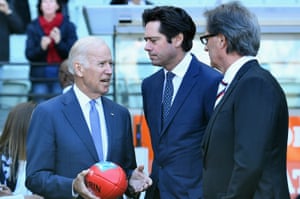
Local v national
When Australia has imported the model of private ownership from the US, where it has long been the norm, it has been as a concomi-tant of scarcity: the likes of the Sydney Swans and the Melbourne Rebels were beyond the resources of their competitions to start. Outside capital was likewise the only way for the FFA to build the A-League from scratch, and it has borne out that old adage of former Spurs chairman Sir Alan (now Lord) Sugar about money in football being like prune juice – it passes straight through. Owners have lost $300m in the competition’s lifespan, and the price of rapid expansion has been recurrent instability – Melbourne City is the only club in which the FFA has not had at one time or other to take a stake. Lately a fashionable word is “franchise”, an Americanism freely bandied about. But its application to Australia is, strictly speaking, limited.
For all its progress, it could be argued that sports governance in Australia remains quietly yoked to its past. Originally, models were representational. Boards of domestic competitions were composed of the representatives of clubs; boards of international sports, like cricket and tennis, diffused their power through federations in which state associations owned their national bodies. “Sport in Australia has traditionally been hierarchical,” a veteran administrator told me. “The old expression is that all you saw when you looked up were arseholes, all you saw when you looked down was shit.” Such configurations, of course, were stricken with fiduciary tensions between the board members’ functions as directors and as delegates. Parochialism was de rigueur, entailing overt precautions against it; the annual national netball championships, for example, were laboriously rotated from state to state in fixed order.
The process of change since has been sweeping, but also gradual, and not unchecked. Australian rules, wealthiest of the football codes, has usually been regarded as in the vanguard of reform, but even its steps have been cautious. Memorably described by Justice Crockett during 1983’s Foschini case as “an alliance of sworn enemies”, the Victorian Football League took another two years to agree to appoint an independent commission, and circumscribed its powers acutely for another eight years until the further transformation of the game’s structure that rang in the Australian Football League. Even today the process remains incomplete, the West Australian Football Commission and South Australian National Football League dangling off the AFL like twin appendices. The AFL’s commercial clout has made it a model for other sports, but its structure remains disarmingly complex. “You often get this view that Aussie rules goes well because of its governance model and we should all be like it,” said the CEO of a state sporting body. “I’d argue that Aussie rules goes well mainly because it’s Aussie rules.”
Looking across the range of sports, one cannot help but be struck by the remarkable variety of electoral systems, even after multiple structural overhauls. In elections of the NRL commission, 26 votes are cast: one by each of the 16 clubs, one by each of the eight commissioners, one each by the NSW and Queensland Rugby Leagues. In elections of the FFA, 10 votes are cast, one each by the nine state and territory bodies, including Northern NSW Football, and the last by the A-League clubs, represented at the moment on a rotational basis by Anthony Di Pietro of Melbourne Victory. In elections for the ARU, 16 votes are cast by state associations, votes being conferred on the basis of membership, control of a Super Rugby team, and more than 50,000 participants, plus a vote for the Rugby Union Players’ Association. In elections at Swimming Australia, not only the states but the Australian Swimmers Association and the Australian Swimming Coaches and Teachers Association are involved.
Further convergence is now being encouraged by the ASC. It has revised its published Sports Governance Principles thrice this century, most recently four years ago as part of a major carrot-and-stick overhaul of sports funding, post the disappointment of the London Olympics. Under the Winning Edge initiative, the seven sports most dependent on the state were offered the carrot of enhanced direct funding if they heeded the stick of approved governance criteria, including board autonomy and strategic planning; in 2014 a further eight sports became similarly subject. Sports must, say the ASC, have “the structure, workforce and leadership capacity to develop successful programs to achieve competitive results and to spend taxpayer funding effectively”.
The ASC has a pronounced and abiding aversion to those aforementioned federated models of sports governance, composition dictated by state associations. The aspirational buzzphrases, as emphasised most firmly in an ASC discussion paper released last year, are of “unitary boards” in “unified models”, where “all of the lower components are not separate legal entities but part of a whole” – in essence like a corporate board, a group of independent professional directors chosen by a nominations committee overseeing a company and its subsidiaries.
Advocates of unitary boards argue that they are better equipped to rise above parochial or sectional interests and legislate in the interests of all. In a big country across which sport is unevenly distributed, it has always been easy for the more populous states to predominate, as certain of them have in the generation of athletes: New South Wales in cricketers, Victoria in netballers, Queensland in swimmers. But the chief underlying rationale of such structures is commercial. Centralisation is regarded as offering better overall co-ordination, elimination of duplication, alignment of stakeholders and a smoother interface with government, broadcasters and sponsors.
So far, Yachting Australia has come furthest along such a path: from 1 July, under the new name Australian Sailing, it expects to be operating under an arrangement in which its constituent state bodies will effectively have outsourced their service provision to the national body, and exist only to monitor that contract (with some scope for strategic input). It is something of a special case, in that its resources have tended to be concentrated at club level, and even after integration it will remain a relatively small body employing just 50 people. But it decided to work with the ASC grain, warned that two-thirds of its funding was in danger if it failed to reform. And over time, the shift is likely to continue, dictated by funding and also fashion – as sport recruits ever more deeply from corporate Australia, resemblances will grow. Golf Australia is on a similar course, its plans scheduled to culminate late next year, with savings identified of between $3m and $4m.
Yet counter arguments exist. The reasons that federated models flourished have not gone away – they prevented hierarchy feeling like autocracy and kept sports connected to their grassroots. To the ASC discussion paper, the Australian state and territory departments of sport and recreation issued a tart rejoinder, accusing the commission of “sweeping generalisations” and a “lack of evidence”, of threatening to “undermine local decision making and commitment” and to downgrade “the function and ownership of paid and volunteer workforce”:
There is validity for sports to adopt business and commercial practices; however, sports need to be cautious in embracing twin identities, i.e. operating as de facto corporate entities when convenient, whilst concurrently wanting to be deemed community-based organisations to access public funding for their sport development and venue needs …Prescribing matters upon which members can apply strategic stewardship of their sport is inappropriate.
There are also some striking exceptions to the prevalent philosophy. At the elite end of the continuum, there’s the prosperous Australian Olympic Committee, whose executive is almost exuberantly conflicted, being composed of members of the International Olympic Commission, of state Olympic Councils and related bodies, and office holders/employees of member sporting organisations. At the community end, there’s the remarkable phenomenon of Little Athletics Australia, an entirely autonomous body in receipt of no state funding. Its board is composed of the chairpersons of the various state chapters, it has a minimal central bureaucracy, and it has warded off several ASC-led attempts to absorb it into the (considerably smaller) Athletics Australia, the last back in 2013. In its recent governance review, Athletics Australia called the failure of the merger “confusing and damaging to the sport”. Little Athletics, unsurprisingly, takes a different view – and a level of success could be inferred from their 550 centres and 80,000 participants.
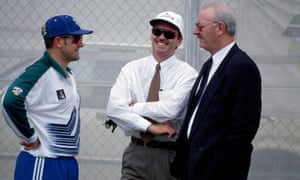
‘Where is the cultural diversity?’
Historical settings have left strong imprints elsewhere. Sport’s original organising unit, of course, is the small club, whose members elected office holders: president, vice-president, secretary, treasurer, committee members and so on. In that configuring of responsibilities, the president has tended naturally to take precedence, the secretary to perform an auxiliary role. The convention carries over in some degree into big sport, where power, prestige and the authority of incumbency have concentrated around presidents and chairmen, and chief executives have, with certain notable exceptions, generally been less conspicuous, and lately more readily interchangeable. “I think it’s pretty well understood in this game that chairmen announce good news, and chief executives handle bad news,” joked one CEO. Some ambitious CEOs, like John O’Neill at the ARU and FFA, and Graham Halbish at Cricket Australia, have chafed in these circumstances, and written bitter memoirs of coming off the worse. Others have simply regarded their roles as finite, like NRL CEO David Smith, who quit after less than three years, leading his chairman to describe the role as “the toughest corporate job in Australia”. A former CEO turned chairman observed: “CEOs in sports organisations are a bit like coaches. They have shelf lives. These days they’re often relied on to act as change agents, and there’s a limit to how long any individual, even an outstanding one, can challenge a status quo.”
Certainly the power of presidents and chairmen can muddy distinctions between boards and management – an area that in corporate life tends to be quite rigorously policed. But perhaps it is truer to say that in sport, in the absence of hard and fast rules, it has been individuals who have tended to define roles, rather than the other way around. On consecutive days, I talked to two AFL club presidents on opposite sides of Collins Street. One professed utmost confidence in his CEO and saw his own role as hands-off; the other, having lost confidence in his CEO, had sacked and replaced him personally. Both had achieved excellent results. The travails of Essendon FC and Cronulla RLFC have encouraged others to clarify responsibilities. At another football club, I was shown a succinct and well-expressed “board charter”, which, while recognising that “there can be overlap between the two areas”, sought to draw “a distinction between governance responsibility and management responsibility”, and scrupulously defined the CEO’s task:
In the normal course of business, the CEO will consult from time to time with the president and other directors to seek guidance on management issues. The CEO is expected to use his judgment as to when and how this is to happen. The CEO is asked to adopt a ‘no surprises’ approach and to alert the president as to any event or incident that may require board attention. The CEO is to put in place appropriate protocols at all levels of management within the club to ensure that events, incidents or processes that are of concern are able to be escalated to him for his action as and when required.
For its directors, this club also set high standards of behaviour, including no drinking at games – a far cry from the world of The Club.
Generally speaking, it makes sense that the larger the organisation, the likelier that primary responsibilities will be vested in the executive, in the sense that management depth will be greater, and the complexity of issues will start to outstrip the ability of part-time, unpaid directors to involve themselves directly. But this raises another issue; several respondents wondered, undogmatically but thoughtfully, whether the operating environment of modern sport remained congenial to honorary boards at all. One speculated that their competition had wandered into a recent crisis through failing to meet often enough, allowing the development of a leadership vacuum that a consensus-driven CEO could not fill on his own.
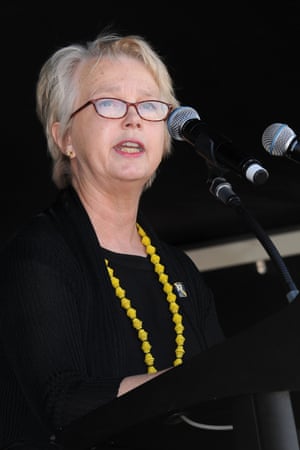
There is a further outgrowing of this honorary tradition: it restricts membership of boards to those who can afford to donate their time, limiting the available gene pool, and thereby restricting the influences brought to bear. Sports participation is diversifying; sports governance is not, or not, at least, at anything like the same rate. ‘You look at these boards and committees, and it’s always the same set of white male faces, from the same schools, the same universities, the same metropolitan circles,” complained a senior manager at a big sport. “Where is the cultural diversity, the regional diversity, the educational and social diversity?”
Not to mention gender diversity, because in this respect sporting Australia makes corporate Australia look like a bunch of lesbian separatists. The proportion of women on the boards of sports organisations has only recently grown beyond the derisory, and mainly through coercion. Under Winning Edge, the ASC mandated that each national sporting organisation “should seek to achieve a target of 40% representation of females on their boards” by 2015 – a target the ASC itself actually failed to achieve, its nine-member board featuring just three women. Most integrated is Hockey Australia, where the balance of a 10-member board is female. But change is tending to come from top down: the ARU has abruptly included three women on its board, as many as are on the boards of its five Super Rugby teams put together. Richmond FC in the AFL is the only club with a female president, Peggy O’Neal.
Women in executive leadership are every bit as scarce, path-finding CEOs like Canterbury RLFC’s Raelene Castle and Cricket WA’s Christina Matthews notwithstanding. Apart from traditionally female sports such as netball and equestrianism, only Taekwondo Australia has a female CEO at a national level; men replaced female CEOs at Volleyball Australia and Basketball Australia, who forsook their roles for family reasons in 2014. “Men are always perfectly encouraging,” said a female director of an Olympic sport. “But it would never occur to any man to stand aside that a woman might advance.” The irony is that every sport purports to be committed to the inclusion of groups formerly excluded – which basically means everyone not a white male. Yet you could remake The Club now, and its all-male cast would not be immediately incongruous.
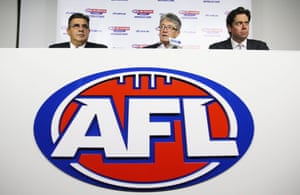
The playing public
Relations between sport’s governors and the paying public are being reshaped by technology and economics. Fans browse sports more freely, consume sports more omnivorously, communicate among themselves more readily, and demand more paradoxically. They crave novelty and tradition, glamour and authenticity; they want their games clean but not sanitised, red-blooded but not brutal. They are also apt to feel taken for granted. When A-League fans took umbrage at the FFA’s failure to “defend” them from allegations of misbehaviour late last year, their wounded amour-propre was also about sport’s lack of genuine grievance mechanisms. The disenchanted fan has no real recourse but the self-penalising gesture of not watching – a hard resolve to sustain. No sport has made a particular forte of listening to fans. What one finds instead is a penchant for recognising fans who best suit the regnant strategy.
In addition to a paying public there is a playing public to consider. When 2009’s Crawford Report recommended a change in emphasis in the state funding of sport in Australia to accent participation rather than merely elite sport, hell was shown to have no fury like AOC president John Coates piqued. (Also, you might well think it curious that taxpayers pick up so much of the tab for preparing Olympic athletes while the AOC controls a foundation worth $140m and Coates earns nearly $700,000 a year, but others could not possibly comment.) But six ministers later, sport forms part of the health portfolio, and the unreconstructed elitism of the Olympics, with its dubious promise of trickle-down benefits, now makes it something of an outlier. Growth in participation numbers is a near-universal aim, especially across genders where cricket and the football codes are challenging more tradition- ally blended activities like tennis and swimming.
Programs abound, notably the AFL’s envied Auskick, with its 185,000 participants, but also the FFA’s MiniRoos, Netball Australia’s NetSetGO, Cricket Australia’s in2CRICKET and Tennis Australia’s Hot Shots. At the simplest level, bigger headcounts make for greater capitation fees, still a sizeable proportion of revenues for many smaller sports. They are also conducive to more of those vital “engagements” – the catch-all phrase for the various contacts with the public that can be measured and leveraged. And sponsors love junior sport, its participants being so wholesome and impressionable.
Recreational sport, however, still tends to have to fend for itself – for reasons not far to seek. When wealthy sports divide the spoils of their growing wealth, athletes have unions and agents to issue and redouble their demands. Who advocates for others? “Sport in this country has been reasonably successful at making money” a senior manager at a big sport told me. “But it’s still working out how to distribute it.’” The discrepancies are sharp. Tennis Australia is building towards a target of $80m in reserves, apparently as a buffer against the unforeseen, such as a player strike at the Australian Open, while its state members get by on not much. The new Australian Sailing will only turn over about $6m, yet Australian yacht clubs control assets, mainly property and infrastructure, worth around $1bn.
That big sport tends to address the public as a market to be monetised rather than a community to be nourished might also be inferred from its various commercial entanglements with pedlars of junk food and iffy multivitamins, with makers of alcoholic and sugary drinks, and recently with gaming companies and casinos. While Hawthorn FC’s on-field success might be the envy of rivals, its biggest revenue streams flow from two licensed venues where patrons lose $23m a year. The issue is endemic. In an audit of 413 websites of 53 sports last year conducted for the Health Journal of Australia, the proportion of sports with problematic sponsors was found to be about three-quarters. How many reputations can a sport launder before endangering its own?
Growing pains
Relations between sport’s governors and governed – athletes themselves – are frankly mixed. Historically, they have been more noted for distance than closeness – for being, at times, streaked with authoritarianism. The critique endures, although boards are likelier to be deemed “out of touch” with “issues confronting the game” – that popular charge from those, like journalists, wishing to flourish their demotic pretensions. The NRL’s last CEO laid waste his media credibility by being unable to remember the name of Kangaroos captain Cameron Smith at a press conference, and running together the names of Benji Marshall and Ben Barba to create “Benji Barba” at a season launch. “The trouble with the NRL commission is that none of them know anything about rugby league,” a shrewd critic complained to me.
True or not, there’s a case that recent firsthand playing and coaching experience is in short supply in governance circles – notably shorter supply than, for instance, commercial skills. Distinguished and knowledgeable sporting alumni are as thinly represented in boardrooms as they are thickly gathered in commentary boxes, and in executive ranks are scarcer still – Cycling Australia CEO Nick Green, a quarter of the Oarsome Foursome, is a notable exception.
Yet it’s hardly difficult to understand why successful modern athletes – personally focused, narrowly specialised and accustomed to being amply rewarded for the tiniest gesture – might not queue up for time-consuming unpaid positions. Mitchell Pearce doesn’t seem a likely successor to his father Wayne on the NRL commission. “The idea of giving back to a sport no longer comes naturally,” said an official who had unsuccessfully courted several recently retired athletes for governance roles. A CEO at another sport said: “There’s always been a bit of an us-and-them mentality between those who play sport and those who run it, but I fear that the distance is widening.”
Finally, there is a layer of challenge to the organisation of sport that is less about sport than about organisation: attracting and keeping good people; building healthy cultures; encouraging enterprise while not endangering compliance; and counteracting symptoms of corporate entropy like office politics, informational bottlenecks and paralysis by analysis. Many entities have grown sharply, disorientatingly. “When I started we could fit everyone in the office on the front steps for the photo for the annual report,” said one long-serving senior manager at a big sport. “Now we employ hundreds of people, all of whose names it’s impossible to know and who we have limited experience managing.” When I said that it sounded like his organisation had lost the pleasures of intimacy but not achieved the advantages of scale, he said: “That’s about it.”
When Williamson wrote The Club, he said that it wasn’t so much about football as about “the use and abuse of managerial power”. In that respect, sports governance has hardly changed at all.
This article is published in the August edition of Griffith Review



